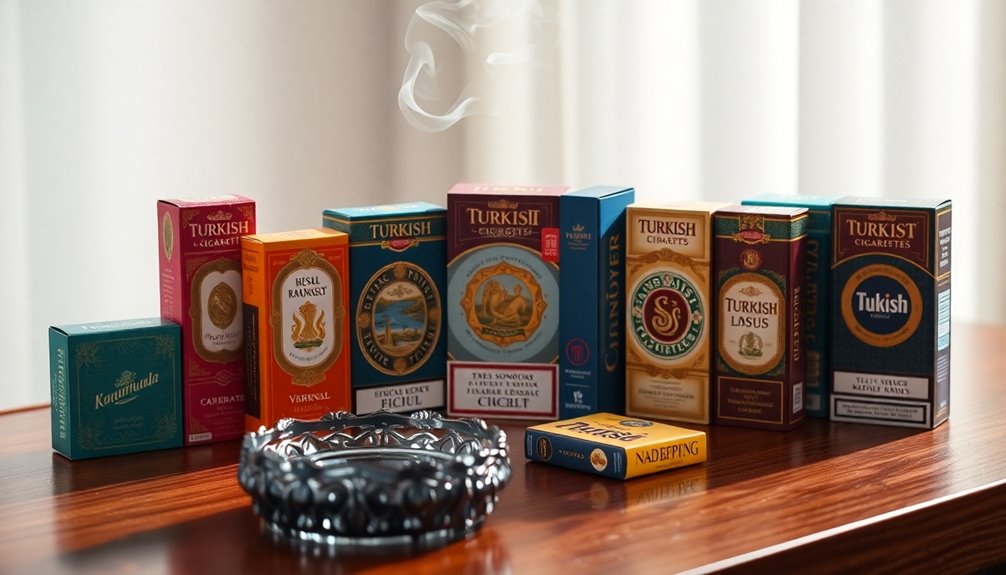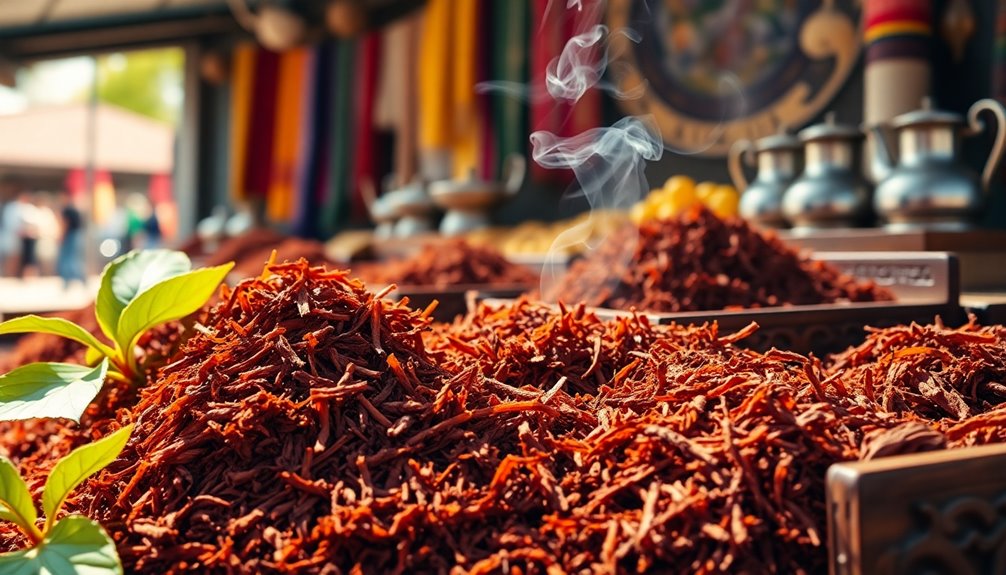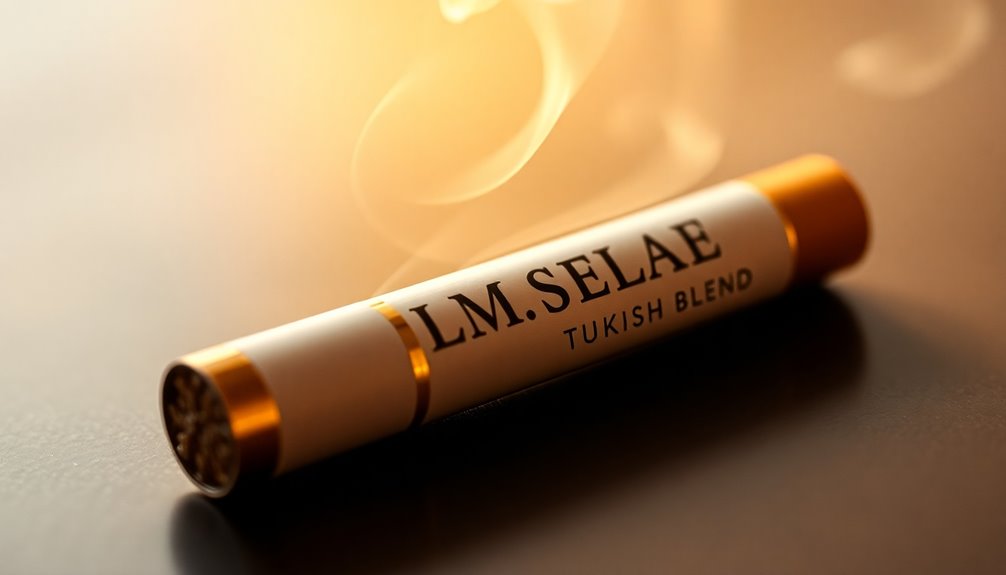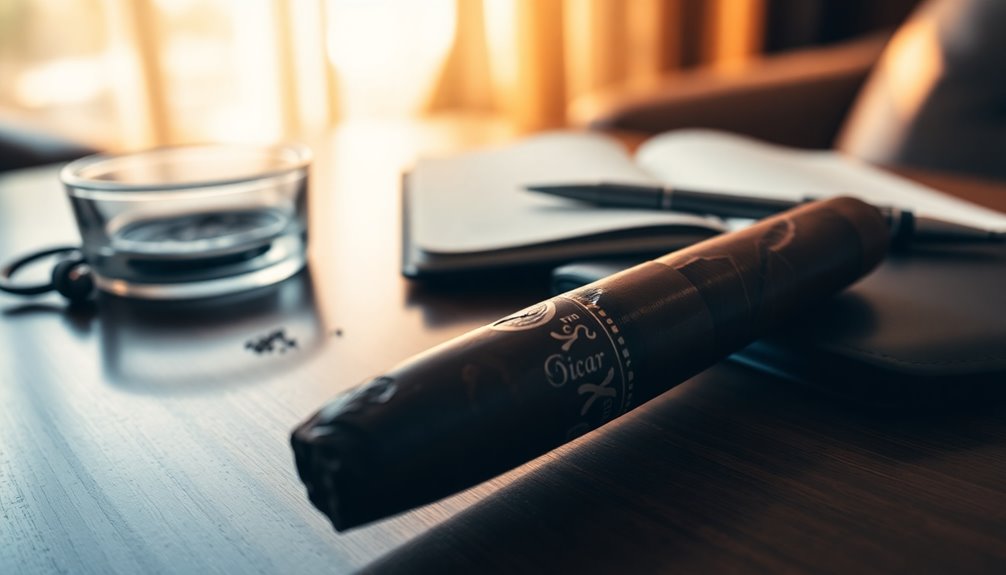If you're exploring Turkish cigarette brands, you'll find a mix of local and international players. TEKEL dominates the market with a significant share, while Philip Morris and Japan Tobacco are key competitors. Popular local brands include Bahar Kirmizi and Samsun, which highlight Turkey's rich tobacco culture. International brands like Camel and Bond Street also have a strong presence, appealing to diverse tastes. Despite challenges, the industry remains vital due to enduring demand. With 20 million users in Turkey, the landscape is dynamic and evolving, so keep following for deeper insights into the industry's trends and offerings.
Key Takeaways
- Philip Morris International Inc leads the Turkish cigarette market, followed by Japan Tobacco Inc and British American Tobacco Plc, with TEKEL holding a 70% market share.
- Popular local brands include Bahar Kirmizi and various Tekel offerings, reflecting Turkey's rich tobacco culture and historical significance.
- Unique Turkish tobacco characteristics feature aromatic and sweet notes, particularly from Samsun and mild flavors from Izmir, enhancing brand appeal.
- With 82.3 thousand tons produced in 2022, Turkey ranks as the 11th largest exporter of cigarettes globally, primarily exporting to Iraq and Georgia.
- Consumption patterns reveal that 31.6% of adults smoke, with a notable increase in smoking rates among women and high school students favoring rolled tobacco.
Market Leaders in Turkey
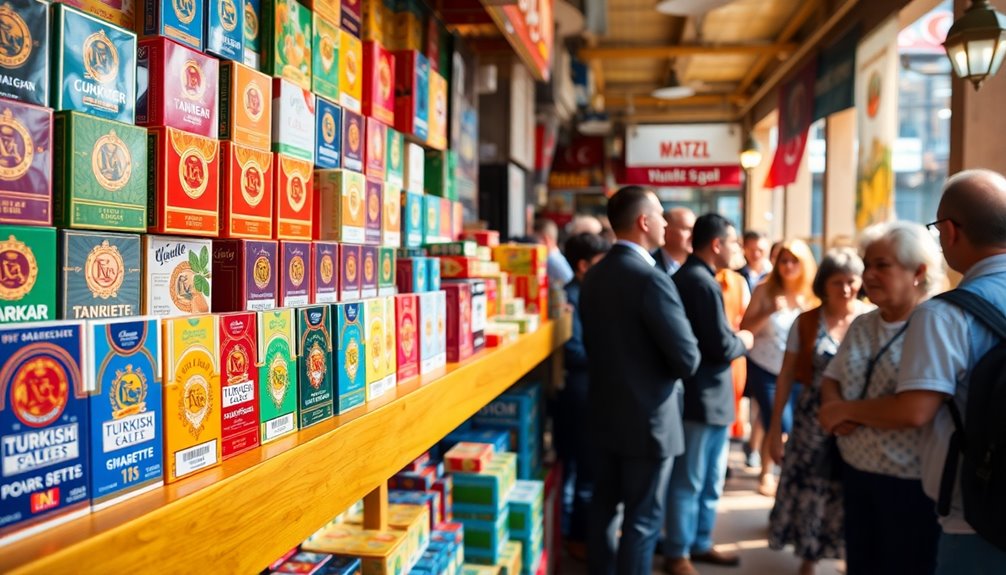
The Turkish cigarette market is dominated by a few key players, with Philip Morris International Inc leading the pack in 2021. You'll notice that this company has consistently recorded impressive retail volume sales, achieving growth for three consecutive years by 2023.
Following closely are Japan Tobacco Inc and British American Tobacco Plc, both of which have established themselves as significant contenders in this landscape. Japan Tobacco has effectively increased its market share by diversifying its brand offerings, while British American Tobacco has maintained its status as a major player through a robust distribution network.
Imperial Brands Plc also plays a vital role in the market, contributing to the competitive dynamics. These companies benefit from a wide array of distribution channels, including convenience stores, small local grocers, and specialized retailers.
Hypermarkets, supermarkets, and even forecourt retailers have gained traction, particularly with the resurgence of tourism and increased car travel. Additionally, the largest subcategory in the market is filter cigarettes king size, which continues to drive sales growth. As you explore the Turkish cigarette market, you'll find that despite economic hurdles, these market leaders continue to thrive and adapt, making them integral to the overall landscape of tobacco products in Turkey.
Popular Cigarette Brands
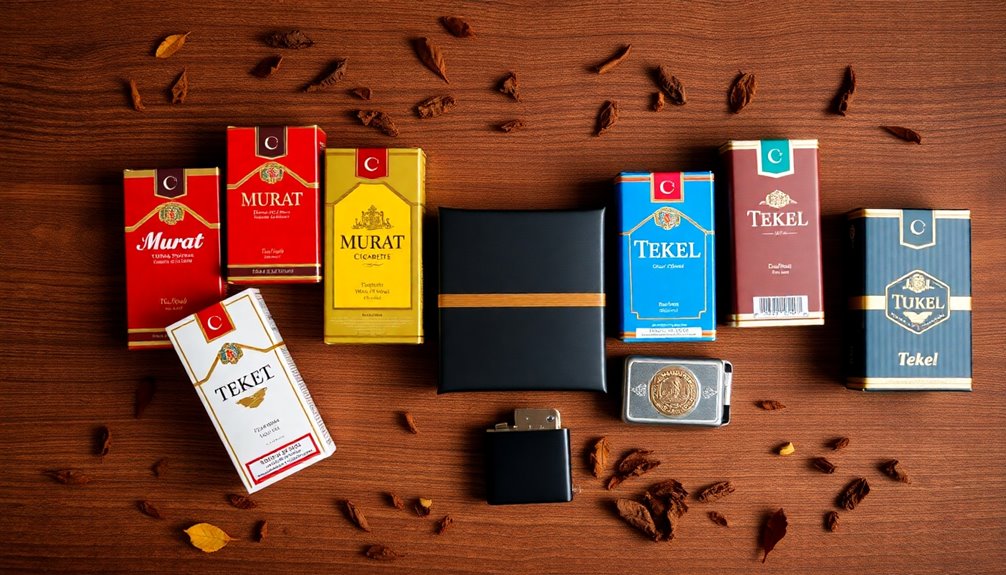
Turkish cigarette brands offer a diverse selection that caters to various preferences and tastes. If you're looking for local options, brands like Bahar Kirmizi, produced by British American Tobacco & Tekel, and various offerings from Tekel, such as Tekel 2000 and Meltem, are popular choices. These brands are known for their unique blends that reflect the rich tobacco culture in Turkey.
You might also enjoy the international brands available in Turkey. Camel, distributed by JTI Türkiye, comes in several variations, including Camel Black, Green, and White, each offering a distinct flavor profile. Additionally, Bond Street Gold, from Philsa A.S., has gained a loyal following.
For those interested in historical and niche brands, Murad, made from pure Turkish tobacco, has a storied past. Samsun 216 and its Bordo variant, produced by British American Tobacco Türkiye, are also noteworthy. These brands often incorporate unique tobacco varieties like Samsun and Izmir, which enhance their flavor profiles.
Each brand showcases the distinctive Turkish tobacco characteristics, such as the aromatic and sweet notes of Samsun or the mild flavor of Izmir Turkish tobacco. With so many options, you're sure to find a cigarette that matches your taste preferences perfectly.
Production Statistics
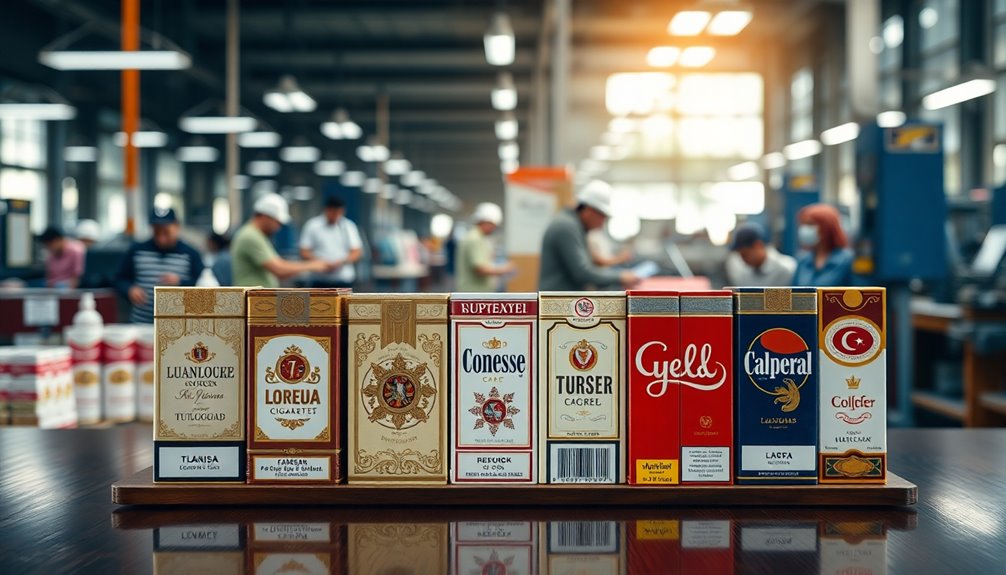
When exploring Turkish cigarette brands, it's important to consider the production statistics that shape the market. In 2022, Türkiye produced around 82.3 thousand tons of unmanufactured tobacco, making up approximately 1.4% of the global production of 5.8 million tons. This marked a significant 55.1% increase in production since 2010.
However, land utilization for tobacco cultivation saw a decline, with about 75.1 thousand hectares used in 2022, down 7.7% from 2010. Interestingly, 20.0 million tobacco product users in Türkiye highlight the ongoing demand for tobacco despite these production challenges.
Most of the tobacco produced in Türkiye is of the Oriental type, which has been a staple in the region. In 1999, Oriental tobacco production was around 251,038 tons, showcasing its historical significance. Virginia and Burley tobacco account for just over 3% of total production, while non-oriental varieties are minimal.
The Turkish government's tobacco policies, particularly after 1996, played a crucial role in boosting production by ensuring TEKEL would purchase all tobacco produced. This framework not only supported farmers but also helped maintain consumer prices.
Understanding these production statistics gives you insight into the tobacco landscape in Türkiye and its impact on local brands.
Consumption Patterns
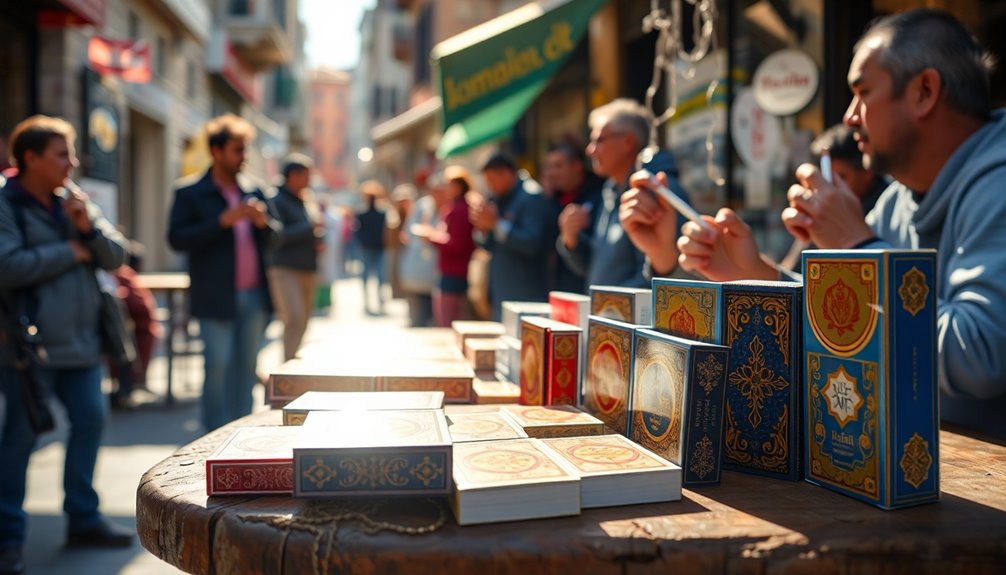
Understanding consumption patterns of tobacco in Türkiye reveals significant insights into the habits and preferences of its population. About 31.6% of adults aged 15 and older smoke, with a striking 44.1% of men and 19.2% of women engaging in this habit. Among the youth aged 13-15, 17.9% currently smoke, with boys at 23.2% and girls at 12.1%. Alarmingly, women's smoking rates increased by 38.3% from 2012 to 2022, highlighting a growing trend.
When it comes to product choice, rolled tobacco is notably popular, particularly among high school students, with 34.8% preferring it. Interestingly, 67.8% of these students buy their tobacco from neighborhood markets, showing a strong community influence on consumption. This trend may be further influenced by the anticipated impact of higher taxes on consumer purchasing behavior.
Additionally, 86% of participants have smokers in their environment, contributing to social acceptance.
Secondhand smoke exposure is a pressing issue, affecting 51.8% of youth in enclosed public spaces and 46.1% at home. This widespread exposure not only impacts health but also underscores the urgent need for effective public health measures to address tobacco use and protect non-smokers from its harmful effects.
Export Performance
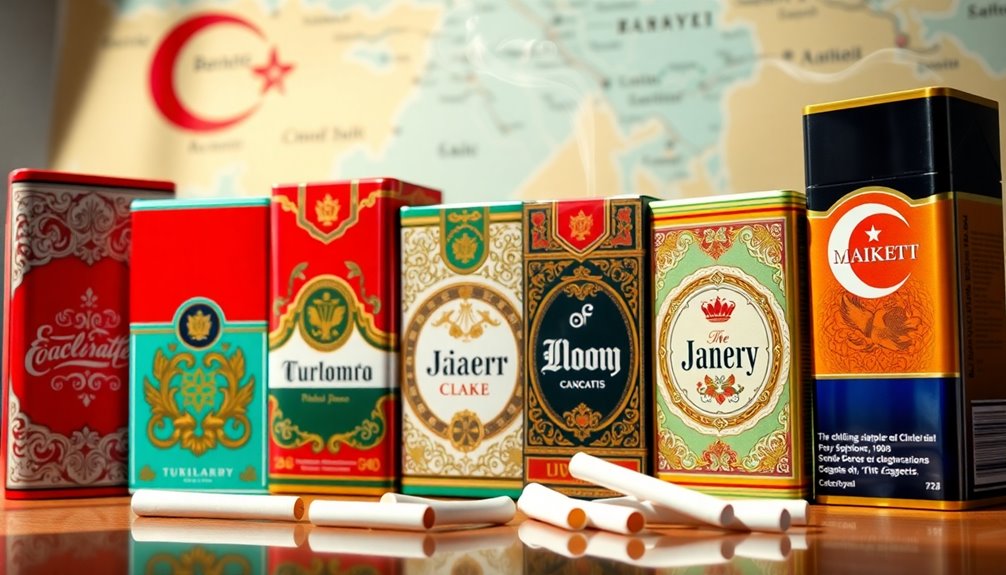
The tobacco industry's significant consumption patterns in Türkiye set the stage for its export performance, reflecting both local habits and global market dynamics. Approximately 55% of Turkey's tobacco production is exported, showcasing its importance in the global market.
In 2022, Turkey exported $494 million worth of cigarettes, ranking as the 11th largest exporter of cigarettes containing tobacco worldwide. Iraq stands out as the primary market, receiving $75.8 million in cigarettes, followed closely by Georgia with $47 million and the United States at $29.7 million.
While the U.S. was a significant recipient in the early 1990s, its share has declined over time. The fastest-growing markets between 2021 and 2022 were Georgia, Japan, and Kuwait, with increases of $46.6 million, $21.2 million, and $17.4 million, respectively.
Despite being a net exporter, Turkey imports $104 million in cigarettes from countries like the U.S. and Germany. The trade balance has fluctuated over the years, but Turkey's strategic partnerships and production control measures continue to play a pivotal role in shaping its export performance. Additionally, Turkey ranks fifth worldwide in total global tobacco production, accounting for 4% of the market.
Marketing Strategies
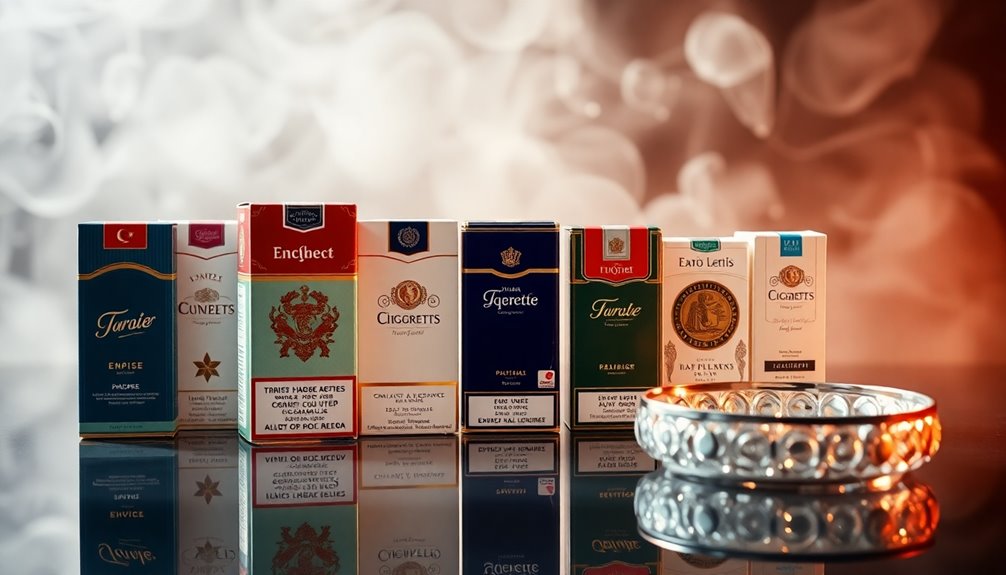
Marketing strategies in the Turkish cigarette industry are designed to adapt to shifting consumer preferences while navigating regulatory challenges. To maintain market share, brands focus on product innovation, offering low tar, ultra-low tar, slim, and super-slim cigarettes. They also introduce flavored options to attract a broader audience and counteract the effects of tobacco control policies. Interestingly, public health messaging through initiatives like the Turkish tobacco control campaigns has also influenced how brands position their products in the market.
Advertisement and promotion play a crucial role in these strategies. Cigarettes are often placed near snacks and sugary drinks at points-of-sale to entice consumers. Brands utilize strong distribution channels and digital screens to enhance product visibility and engage customers. Corporate social responsibility initiatives are also leveraged to promote smoking indirectly.
Pricing strategies are carefully crafted to cater to diverse consumer segments. By adjusting prices based on market conditions, companies can expand their market share in mid-priced and economy categories.
Targeting specific demographics is essential too. While direct targeting in Turkey isn't specifically documented, global trends show that tobacco companies often focus on low socioeconomic females and adolescents.
Local Brand Overview
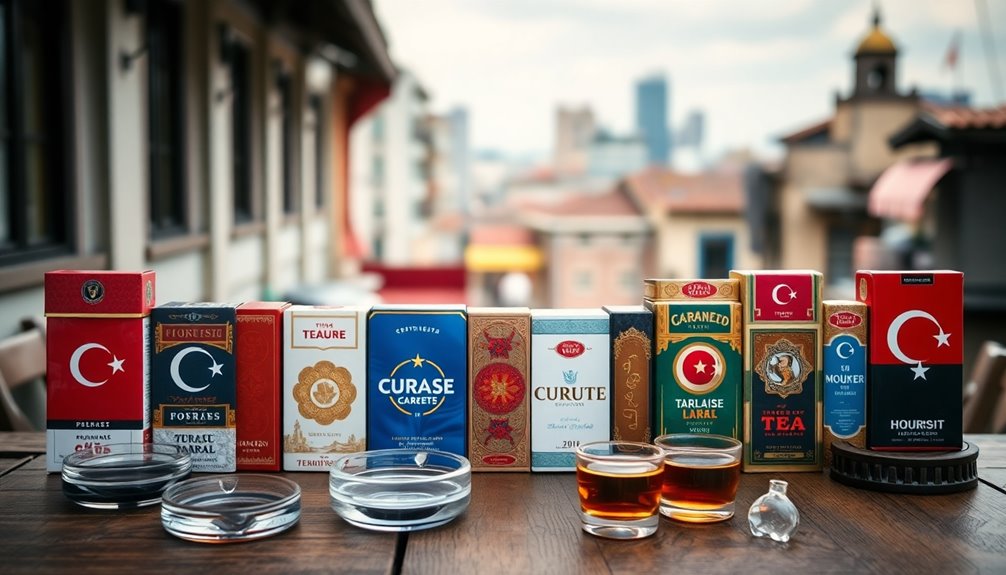
Local cigarette brands play a significant role in Turkey's tobacco landscape, with TEKEL leading the market with a commanding 70% share. This dominance makes TEKEL the largest tobacco exporter in the country, overseeing the manufacture, import, and sale of various tobacco products.
You'll find a variety of local brands like Bahar Kirmizi, Istanblue Blue, Tekel 2000, Meltem, and Meltem 100's, each catering to different consumer preferences.
Turkey produces an impressive 159.91 billion cigarettes annually, with a per capita consumption of about 1,770 cigarettes. Filtered cigarettes, especially king-size variants, are particularly popular among Turkish smokers.
Interestingly, local brands like Samsun enjoy high recognition rates even among children, highlighting their ingrained presence in the culture.
Despite rising excise taxes aimed at limiting consumption, the tobacco industry's economic impact remains significant, contributing over 40% to Turkey's Gross National Income.
TEKEL's subsidized tobacco processing helps keep consumer prices lower, making local brands accessible.
International Brand Presence
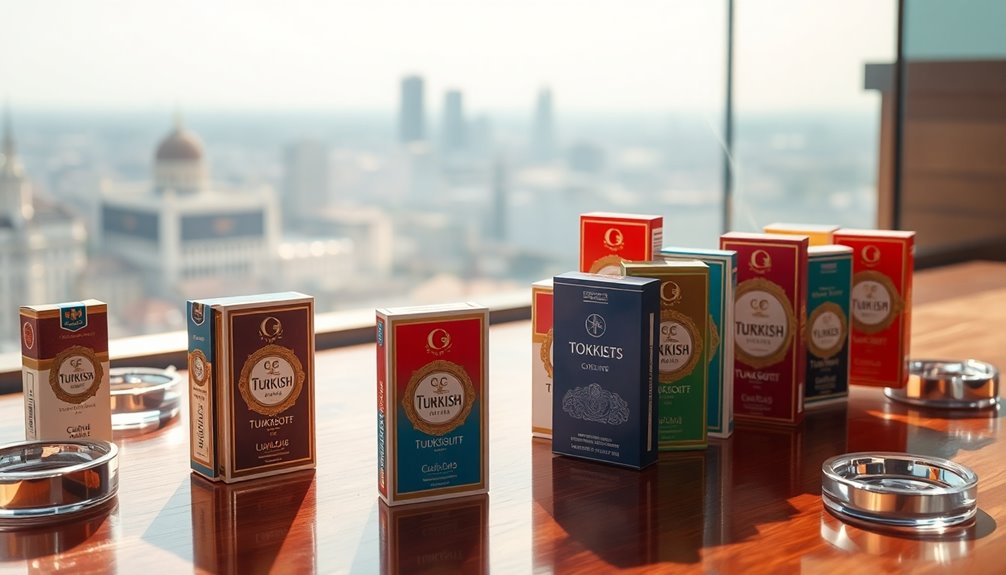
While local brands dominate the Turkish market, international players also exert a strong influence. Philip Morris International Inc. leads the way with popular brands like Parliament, Marlboro, L&M, and Muratti. They've successfully gained market share for three consecutive years, particularly in the king-size filter cigarette category. Brands like Lark also contribute to their presence. Additionally, the average unit prices for tobacco have increased significantly due to economic factors.
Following closely is Japan Tobacco International (JTI), which holds a significant market share. JTI's key brands include Winston, Mevius, Camel, and LD, alongside regional favorites such as Glamour and Benson & Hedges. They even offer roll-your-own options like Amber Leaf and Old Holborn, catering to diverse preferences.
British American Tobacco (BAT) is another major player in Turkey, leveraging a mix of global and regional brands. Their distribution channels span convenience stores, hypermarkets, and tobacco specialists, helping them maintain a substantial market presence.
As you navigate the Turkish cigarette market, keep in mind that convenience stores are the primary distribution channels for these international brands.
With expected market growth of over 5% from 2021-2026, the competition among these international giants remains fierce.
Frequently Asked Questions
What Are the Health Impacts of Smoking Turkish Cigarettes?
Smoking Turkish cigarettes can significantly harm your health. It increases your risk of heart disease, lung cancer, and chronic obstructive pulmonary disease (COPD).
You're also more likely to suffer from strokes and various other cancers. Beyond personal health, smoking impacts your quality of life, leading to early mortality and disability.
Economically, it drains resources and contributes to environmental waste. The consequences of smoking are severe and far-reaching, affecting both you and society.
How Do Turkish Cigarette Prices Compare to Other Countries?
When you look at Turkish cigarette prices, you'll find they're quite low compared to many developed nations. A 20-pack of Marlboro costs around $2.10, similar to prices in neighboring countries like Uzbekistan and Iraq.
In contrast, countries like Australia and the UK charge significantly more, often exceeding $17. With Turkey's lower excise taxes, cigarettes remain more affordable, influencing overall demand and consumption patterns within the country.
Are There Specific Regulations for Cigarette Packaging in Turkey?
Yes, there are specific regulations for cigarette packaging in Turkey.
You'll find that all tobacco products must use plain packaging without logos or graphics. The packaging must have uniform writing styles and health warnings that cover 65% of both the front and back.
Trademarks can only occupy a small area on one side. Compliance is strictly monitored, and the regulations align with international health guidelines, aiming to reduce smoking rates across the country.
What Is the Historical Context of Tobacco Use in Turkey?
When you explore the historical context of tobacco use in Turkey, you'll find it dates back to around 1603, initially facing bans due to objections.
By 1860, it became a tax revenue source. The establishment of the Tobacco Monopoly in 1874 centralized production and trade.
Over the years, foreign influences shaped the market, leading to significant changes, especially after 2002 when private production emerged, transforming Turkey into a regional tobacco hub.
How Has the Smoking Culture Evolved in Turkey Over the Years?
You'll notice that smoking culture in Turkey has transformed significantly over the years. Initially embraced by the elite, tobacco faced strict bans due to health concerns and social issues.
As regulations eased, cigarette consumption surged, particularly among women. Despite ongoing anti-smoking campaigns, you see a rise in smoking prevalence, highlighting the complex relationship between tradition, modernity, and health awareness in Turkish society.
The landscape continues to evolve, reflecting changing attitudes toward tobacco use.
Conclusion
In conclusion, Turkey's cigarette market is dynamic and diverse, featuring a mix of local and international brands. With significant production and consumption patterns, these brands effectively employ marketing strategies to capture consumer attention. As you explore this landscape, you'll see how both market leaders and emerging players shape the industry. Understanding these elements can give you valuable insights into Turkey's unique smoking culture and the broader implications for tobacco consumption in the region.
